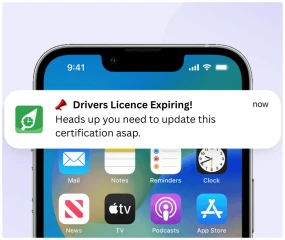Understanding full time vs part time work schedule
There are probably tons of questions going through your head as a manager when hiring new employees or changing work schedules. The majority of which revolve around the distinction between part-time and full-time work, and that much is true.
For instance, you may be wondering how many hours make a full-time job. What distinguishes part-time work from full-time employment? Think again if you believe it is merely the hours listed on their timesheets. Much more is involved than that.
All the information you need to create effective schedules for your part-time and full-time employees will be in this guide. So if you're ready, let's get started.
What exactly is full-time work?
Full-time employment is a legal designation that establishes reasonable minimum working hours and the number of hours after which hourly-paid employees are entitled to overtime pay.
People who, despite often working fewer than 35 hours per week, worked 35 hours or more during the benchmark week are considered to be employed full-time.
What is a part-time work?
We already know that a part-time job involves fewer hours than full-time employment.
You have the freedom to choose their work schedule based on the demands of your company as an employer. Understanding the distinction between part-time and full-time hours is crucial since it affects the perks and benefits offered.
The difference between part time vs full time
As an employer, you are free to define the difference between full-time and part-time hours. Hence, if you're studying the topic, you've probably run into different meanings in different places. It is also difficult to distinguish between proper and incorrect definitions considering there are so many contradictory ones out there.
What exactly qualifies as a full-time or part-time employee in Australia? And if employers don't get it right the first time, what are the repercussions?
There are many different types of hours that people work, from those who work a few hours each week to those who work extremely long hours (e.g. over 60 hours a week). Classifying people as "full-time" or "part-time" workers is a practical and well-established method of describing this span of hours.
It is crucial to be aware of the following when interpreting employment, hour levels and movements in the context of full-time and part-time work:
- How the headline employment figures for full-time and part-time are calculated, and
- Is it also feasible to use the data from the Labour Force Survey in different ways to understand full-time and part-time employment?
Full time: People who, despite often working fewer than 35 hours per week, worked 35 hours or more during the reference week are considered to be employed full-time.
Part-time: Part-time workers are those who typically put in fewer than 35 hours per week (in all jobs), and who did so during the reference week.
An objective, consistent, and consistent method of identifying all employed persons as either full- or part-time is ensured by using an hours-based criterion (i.e. 35 hours).
Nevertheless, no metric can capture all aspects of full-time and part-time employment. For instance, it may be more appropriate to look at full-time/part-time status according to the hours often spent when tracking people's standard working patterns.
38 or 40 hours a week are the most frequent hours that people work.
RosterElf: rostering made easy
RosterElf’s cloud-based payroll and rostering software truly is a game-changer. Say goodbye to roster conflicts and chase employees for their availability to work. Instead, employees can easily update their availability to work and notify managers about it through a smartphone app.
Staff set the times and days they can work, and RosterElf does the rest. Our software then automatically suggests available employees to fill shifts.
What are you waiting for? Time to take your rostering and payroll game to the next level and boost your business’ performance. Contact us, and our team will be more than happy to assist you.
To get a clearer view of how our app works, enjoy 15-day access to our tool for free!



